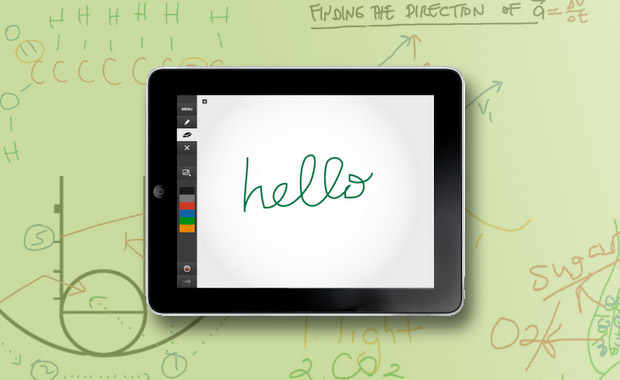Three Free Ubiquitous Apps Professors Need
Three Free Ubiquitous Apps Professors Need Even If They Don’t Have A Smartphone
What are important characteristics of a good education app? Okay, free is good. I will give you that one. What else? For me, I love ubiquitous apps, or in other words, programs that work on all my devices, including my phone, my iPad, and my computer. I also prefer apps that allow me to access my data almost anywhere I go. For the purposes of this article, the data needs to have a meaningful educational purpose. Students should see their smart phones as more than just media consumption devices. The apps need to be easy to use and reliable on a variety of platforms. Three apps immediately come to mind that fit this description: Evernote, Dropbox, and Readability. Let’s look at descriptions, suggested uses, possible issues, and alternatives for each of these apps.
 My first recommendation is Evernote, which is a cloud-based note taking tool that enables your notes to be synchronized between devices and shared with other users. In addition to conventional note taking, Evernote can import pictures of notes from a whiteboard using a phone or laptop camera. Evernote uses OCR technology to import images, making any text on the images searchable and easy to find at a later date. Notebooks (groups of notes) can be shared with students or colleagues by sending them the notebook’s URL. The address for a notebook could be posted once in Blackboard at the beginning of a class and students could see new notes as they are added throughout the term. One possible issue is formatting problems that occur when copying and pasting text from another source, such as a Word document. This can be avoided by converting the document to plain text before copying. A possible alternative to Evernote is Microsoft’s OneNote. Currently OneNote is a better program if you only plan to take notes on a PC. However, Evernote provides a consistent experience across PCs, Macs, and mobile devices which makes it more useful for those of us who want to be productive note takers regardless of the technology we are currently using.
My first recommendation is Evernote, which is a cloud-based note taking tool that enables your notes to be synchronized between devices and shared with other users. In addition to conventional note taking, Evernote can import pictures of notes from a whiteboard using a phone or laptop camera. Evernote uses OCR technology to import images, making any text on the images searchable and easy to find at a later date. Notebooks (groups of notes) can be shared with students or colleagues by sending them the notebook’s URL. The address for a notebook could be posted once in Blackboard at the beginning of a class and students could see new notes as they are added throughout the term. One possible issue is formatting problems that occur when copying and pasting text from another source, such as a Word document. This can be avoided by converting the document to plain text before copying. A possible alternative to Evernote is Microsoft’s OneNote. Currently OneNote is a better program if you only plan to take notes on a PC. However, Evernote provides a consistent experience across PCs, Macs, and mobile devices which makes it more useful for those of us who want to be productive note takers regardless of the technology we are currently using.
 The second ubiquitous app I recommend is Dropbox, which is an online file storage tool that can be used to share and back up your documents. A professor might use Dropbox instead of email to share a folder where students submit projects with large file sizes, such as PowerPoint presentations, videos, or images. Students would copy completed projects to the folder and then let the instructor know so the project could be graded. Dropbox syncs all of the files to a folder on your computer so you do not have to manually download each document. Another possible use would be to create a folder that contains files that you frequently share with your class. This folder can be made available to students on an as needed basis or can be made public so students can help themselves. It would be nice if Dropbox provided a service where students could email your Dropbox with an assignment. There is a third party tool that can help you accomplish this (http://ifttt.com/dropbox), but by using it, you give the vendor access to your Dropbox content, probably okay but not preferred. If your primary use for Dropbox is to back up institutional data, the university’s synching system should be used instead. There are other file sharing/backup applications, such as SugarSync (https://www.sugarsync.com/), which provide more sophisticated syncing and sharing options. However, Dropbox’s simplicity and tight integration with your computer’s file management makes it a popular choice and one I recommend.
The second ubiquitous app I recommend is Dropbox, which is an online file storage tool that can be used to share and back up your documents. A professor might use Dropbox instead of email to share a folder where students submit projects with large file sizes, such as PowerPoint presentations, videos, or images. Students would copy completed projects to the folder and then let the instructor know so the project could be graded. Dropbox syncs all of the files to a folder on your computer so you do not have to manually download each document. Another possible use would be to create a folder that contains files that you frequently share with your class. This folder can be made available to students on an as needed basis or can be made public so students can help themselves. It would be nice if Dropbox provided a service where students could email your Dropbox with an assignment. There is a third party tool that can help you accomplish this (http://ifttt.com/dropbox), but by using it, you give the vendor access to your Dropbox content, probably okay but not preferred. If your primary use for Dropbox is to back up institutional data, the university’s synching system should be used instead. There are other file sharing/backup applications, such as SugarSync (https://www.sugarsync.com/), which provide more sophisticated syncing and sharing options. However, Dropbox’s simplicity and tight integration with your computer’s file management makes it a popular choice and one I recommend.
 My final suggestion, Readability, allows users to customize online articles they are reading, making these articles ad-free with options to change the font, character size, and background. Readability can also be used to save and organize articles for reading later. You might want to use Readability to modify educational blogs and web articles so they are easier to read when shown on a data projector in class. You can also use Readability to save web articles that you can read at your convenience on a mobile device, web browser, or even your Kindle. One possible issue you may run into is that not all web pages allow Readability to do its magic. You can tell if this is the case when the Readability page is blank or fails to load. Alternatives such as ReadItLater and Instapaper can be used to save web pages for later viewing; however, neither has the elegant formatting features of Readability.
My final suggestion, Readability, allows users to customize online articles they are reading, making these articles ad-free with options to change the font, character size, and background. Readability can also be used to save and organize articles for reading later. You might want to use Readability to modify educational blogs and web articles so they are easier to read when shown on a data projector in class. You can also use Readability to save web articles that you can read at your convenience on a mobile device, web browser, or even your Kindle. One possible issue you may run into is that not all web pages allow Readability to do its magic. You can tell if this is the case when the Readability page is blank or fails to load. Alternatives such as ReadItLater and Instapaper can be used to save web pages for later viewing; however, neither has the elegant formatting features of Readability.
Evernote, Dropbox, and Readability are all popular in the educational community because they provide much needed solutions for teaching and learning, and they work on almost any device. Educators want cloud-based apps that work across platforms and can be used by educators and students as productivity tools, which helps us all to become better 21st Century learners.


